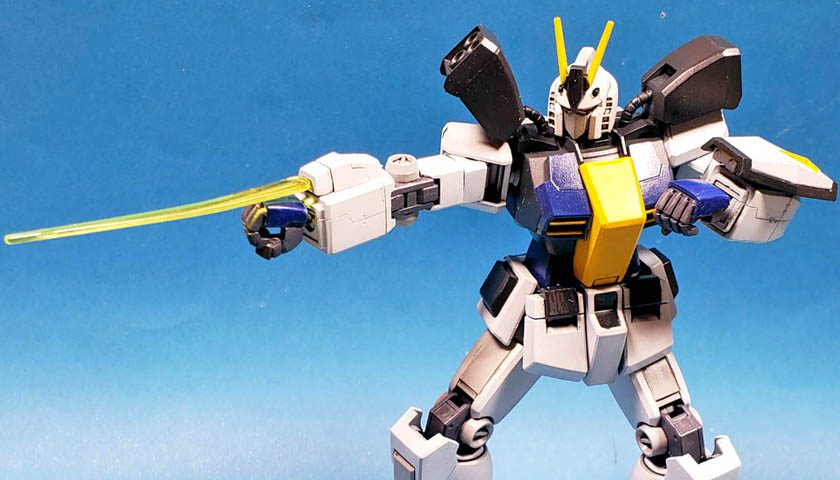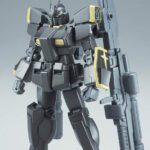As a kid in the mid-1970s, a big part of my play time was LEGO. (No “s” on the end please… 😉 ) We didn’t have any of the fancy sets like kids buy today. The LEGO of today are much more model-like. Nope, in my day, we had basically two shapes – squares and rectangles. If you played with the old LEGO, you know exactly what I’m talking about. You had your block and flat type, and everything was described by the number of pegs. “Hand me a red 4 by 2 block.” Everyone knew what that was.
There were a few shapes besides those – some wheels, a few that had angled sides, and the occasional clear piece. But for the most part, buying a new set of LEGO meant getting a box full of the same basic shapes, and a few colors.
Of course – we loved it. Imagination ruled. I built helicopters and forts and fire trucks. Cannons and tanks. Once I even built something that passed for a robot. As I got a bit older, more advanced sets with specialized shapes began to appear. I recall one that had a police station and a hospital, complete with an ambulance and a police car. All on a big green flat LEGO base. The extra shapes did help in building some things, but for the most part, kids were versed enough in making do with a few limited shapes that no one felt held back.
As the years went by, my focus shifted more to plastic scale models. While they replicated my favorite planes, tanks, and spaceships, I did miss the freeform possibilities that LEGO provided. Building a Monogram 1/48 B-17 was loads of fun… but when it was done, it was done. You hung it from the ceiling and there it stayed. But with LEGO… at the end of the day, you took it apart, put it all back in the box (except for a scattered few for your parents to step on in the dark…), and the next day, started it all over again.
The Next Generation
When my son was young, in the mid 90’s, he played with LEGO also. But these were far different. When we purchased a new set for him, it was a thing of some sort. A car, or a plane, or a robot. Whatever. The completed model looked great, with compound curves and angles and moving gimmicks. And while you could rebuild them into other forms, the very design of the parts in some ways limited what could be created. If you wanted a big, slab-sided fort that your plastic soldiers could fight from, the old-school LEGO blocks had to come out.
Because I never grew up, I’d spend time building LEGO with him – and enjoyed it immensely. As I’d never lost my childhood love for the little blocks, snapping up the colorful blocks with him was doubly enjoyable. Not only did I have fun with him, but I could sit back and see in his eyes the same joy I received as a kid from LEGO.
Eventually, he grew up, went off to college, graduated college, and just this past weekend, was married. I suppose in a few years he’ll be sitting on the carpet, playing with a little person of his own, stacking LEGO.
And as I write this, tears run down my cheeks – tears of joy – as I think that perhaps a certain grandpa will be there, too… enjoying the fun. A kid in a somewhat tired body.
Now, building plastic models is plenty of fun, no doubt. They bring their own joy to the table. Still, I miss that satisfying process of clicking something together, and then taking it apart, and putting it back together.
Enter Gunpla
When I started building Gunpla (a portmanteau of Gundam plastic modeling), I was immediately drawn to the fact that I could take the parts from the sprues, snap it together, take it apart – and do it again. They were like LEGO. The appeal was instant.
As I built more, I realized that the process could be what I wanted it to be. I could snap it up, no paint, and just have fun with it. All the parts are pre-colored, so it looks good enough right out of the box. In fact, Bandai sells millions of the kits per year that are built just that way, with at most a few simple touch-ups here and there with Gundam markers.
And if you want to do “proper” modeling, that too is just fine – prime, paint, and weather to your heart’s content. It was as if I could have my cake and eat it to.
The trouble was, the smaller Gunpla kits, in 1/144th scale, were incredibly affordable. (Assuming you don’t buy them in vast quantity… but I wouldn’t know anything about that…) I purchased a few more than I probably should have. Realizing that I’d take a few years to get around to painting them all, I virtually stopped buying them, and made up my mind to take a decidedly LEGO route. I’d nip and denub the parts, and just build them. Right out of the box. Snap, snap, click click.
It was great fun, too! I spent several weeks worth of lunch breaks, in my office conference room, snapping up the kits. I’d get one finished, and then bring in the next. Of course, the intent was to eventually paint them. But the great benefit to Gunpla is they can be enjoyed without all the painting too.
And Now He’ll Actually Talk About This Specific Model
One of the kits I snapped up was the HGBF 1/144 Gundam Lightning Black Warrior. A kit based on a mobile suit in the Gundam Build Fighters Series, the Black Warrior is a version of the Red Warrior, which is… oh, it’s all made-up nonsense anyway.
It looked cool so I bought it. 🙂
As I snapped it up, though, I realized the default color scheme, while looking cool on-screen, and in bare plastic, would be a nightmare to paint and weather. Adding shadows and highlights to black models is certainly possible. It’s not really hard, even. But I find it very tedious. And that very tedium is what drove me to Gunpla – a desire to inject some good old-fashioned fun back into it all.
I decided a new color scheme was in order. So I did what any creative person did… I went to Google to find a color scheme I could rip off that would inspire me. 😉 Sadly, I don’t recall the name of the artist who did it, or even the mobile suit specifically. What I do recall is that it was white, blue, and yellow. I thought that scheme would look good. It’s close enough to canon to be believable, yet I could give it my own twists to make it unique. (Except for the part about copying the other guys work, sort of… but we’ll ignore that…)
In previous builds where I’d assembled the kit from the box, I’d unsnapped everything eventually, and built it in the more traditional method. However, for this one, I wanted to treat it a bit like a Warhammer 40K figure. Just paint it while it was assembled. Although I did break it down into major components – arms, legs, torso, etc., the basic frame and armor parts were left intact.
I started by priming everything using Badger’s Stynylrez Gray Primer. For the various joints, I articulated them into their bent positions first, primed them that way, and after sufficient drying time, straightened them out and added more primer.
I knew I wanted two basic colors to dominate – blue and white. The torso section and shoulder mounted thrusters were airbrushed with Vallejo Model Air Dark Sea Blue. All other parts received an airbrushed coat of Vallejo Mecha Color Offwhite. With these base colors established, I could then brush paint the rest.
The inner frame bits were carefully painted in Vallejo Mecha Color Phantom Gray, which is a very nice color for a more traditional looking inner frame section. Ammo of Mig Blue was added in a few places as a lighter contrast to the Dark Sea Blue. I thought this would help bring out the blue in the Dark Sea Blue more, so it did not appear to be pure black. Yellow bits, including the standard “shoot me here” section in the center of the chest, was painted in Vallejo Game Color Yellow Gold, which is a wonderfully strong color. The other armor parts were given a few spots of Vallejo Sky Gray here and there, just to break up the white panels.
With the major colors in place, I gave everything a coat of Future gloss varnish. I wanted to add some panel line shading, but I did not want to endanger the Bandai plastic by using enamel or oil based thinners. Instead, I turned to a product I am finding more and more useful – Citadel’s Gloss Nuln Oil. It provides a very strong shade effect in recesses and corners, yet dries very quickly. And because I was putting gloss over gloss, it greatly reduced surface tension, allowing it to generally behave well and stay put where I wanted it to. While it can’t be rubbed off as is often done with enamel/oil washes, careful application will keep it generally where you want it to go. And it won’t eat the Bandai plastic. If any does get in places where you don’t want it, simply touch up later with the appropriate color.
With the Nuln Oil shade in place and dry, I snapped the little guy up. I have to say, despite the scheme’s simplicity, I am very happy with it. The best part was that it brought back memories of the LEGO days… the satisfying “snap” of putting parts together… yet combined with the joy that traditional modeling supplies too.
The Gundam is not finished, of course. I still need to add some degree of weathering. I’m not sure how much I want to add. I even have a notion to glue it in a fixed pose and place it on a base of some sort. And some decisions need to be made about all the weapons options. This kit has a load of them… parts can be mixed and matched in a great variety of configurations, including one obscenely long option that to my eye looks a bit ridiculous. I’ll probably end up going with a minimalist plan, and just using a few of the smaller, more conventional options.
For now though, I think I will leave him as-is. To be honest, I like having him sitting on my model desk.
Why Not Give Gunpla A Try?
If you’ve read this blog for any length of time, you know my whole back story – a decade of almost nothing but World War II fighters left me a bit burned out. The foray into Gunpla breathed new life into the hobby for me.
I get that many “traditional” modelers see Gunpla kits as kid’s toys, and not serious models. I know this because I was one who stood with arms folded and a haughty look on my face and joked about them with other IPMS sorts. They’re just snap together play toys right?
Yet looking back, I now admit – a bit shamefully, really – that I was dead wrong. In many ways, they represent the pure fun I had as a kid, both with models and with LEGO, better than anything else I’ve built as an adult. I can use all the advanced techniques I learned for aircraft on them to good effect. Yet I can also sit in my break room, and simply snap them up, much like I did with those little plastic blocks as a kid.
And the best part is the fun it breathes into my day. I can honestly say that Gunpla kept me in the hobby, and has been an almost “Renaissance” type of period for my hobby life.
If you’ve not built one, give it a try. You can get a cool looking kit for under US$20. Snap it up, and play with it. Yes, play with it. I won’t tell. But I can guarantee one thing.
You will have fun.
And having fun in the hobby is good enough. 😀


















Leave a Reply